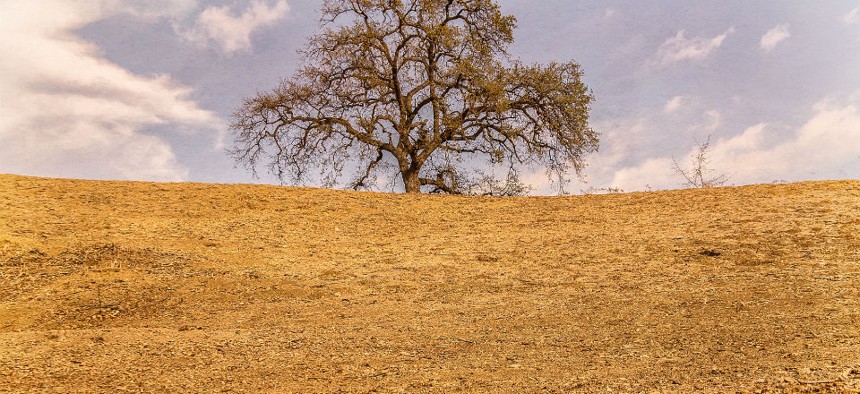Drought Is Making California Shrink in Mass

Topanga Canyon, Calif., in February 2014. Flickr user wasim muklashy

Connecting state and local government leaders
There are "potentially dire consequences for the economic and food security of the United States."
To live in California is to be reminded every day about the dwindling water supply. With more than 80 percent of the state locked in extreme drought, it's no wonder people are taking desperate measures like replacing their lawns with astroturf, snitching on neighbors who overuse their hoses, and eating off paper plates to avoid dish washing.
So much groundwater has disappeared—much of it from pumping to farms—that it's causing the state to shrink in mass. We know that thanks to a pair of satellites that measure changes in the planet's gravity. The GRACE mission, run by U.S. and German scientists, has tracked the decline in California's water storage from 2002 (at left) to 2014 (right). The areas that have turned orange and red have lost enough water to make a significant imprint on the gravitational field.
Quantifying water loss can be tough in places like the (once-fertile) Central Valley due to poor monitoring efforts and lax water-use reporting. It's likely governments will rely on this method in the future, as "groundwater reserves, the traditional backup for water supplies during extended periods of drought, are in decline globally," according to a 2013 study in Science. But as for what's happening in California, and what it bodes for the future, have a look at this assessment from scientists who used GRACE to track water loss in the Sacramento and San Joaquin river basins from 2003 to 2010. They write inGeophysical Research Letters:
We find that the basins are losing water at a rate of 31.0 ± 2.7 mm yr−1 equivalent water height, equal to a volume of 30.9 km3 for the study period, or nearly the capacity of Lake Mead, the largest reservoir in the United States. We use additional observations and hydrological model information to determine that the majority of these losses are due to groundwater depletion in the Central Valley. Our results show that the Central Valley lost 20.4 ± 3.9 mm yr−1 of groundwater during the 78-month period, or 20.3 km3 in volume. Continued groundwater depletion at this rate may well be unsustainable, with potentially dire consequences for the economic and food security of the United States.
(Image via Flickr user wasim muklashy)




